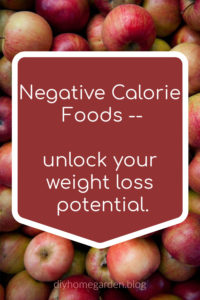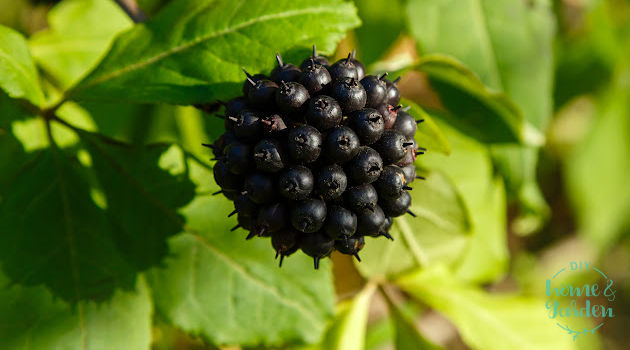Negative calorie foods are not foods that have calories below zero. Rather they are foods with very low caloric values that require greater calories to be metabolized by the body.
So, let’s look at an example we all know–an apple. A small apple contains approximately 75 calories. According to those who support the negative calorie concept, your body expends more energy than that number in chewing, swallowing, and then breaking down that apple for digestion.
So because the body burns more calories than the actual calories they contain, this makes them really great for weight loss. These foods are preferably eaten in their raw state. Cooking and pasteurizing increase the calorie content of fruits and vegetables, so the intended calorie deficit will not be achieved anymore if you heat negative calorie foods.
At least, that’s the theory.
The truth is that researchers are still investigating whether this concept is real or not. We will present you with the concept, and then we will sit back and let you decide if you agree with it–or not!
Negative calorie foods
Here’s a list of negative calorie foods that you can incorporate into your daily meals:
Vegetables:
Broccoli, celery, asparagus, cabbage, lettuce, onion, leek, green onion, turnip, jicama, carrots, raw mung sprouts, cauliflower, cucumber, raw lentil sprouts, garlic, spinach, kale, alfalfa sprouts, chili, bell peppers, radish, zucchini, eggplant
Fruits:
Apples, blueberries, raspberries, blackberries, strawberries, tomatoes, grapefruit, lemon, lime.
Eat as many negative calorie foods as you wish, but follow these rules:
The idea is to eat as much of these negative calorie foods on a daily basis if you want permanent weight loss and vibrant health. To maximize the health benefits of negative calorie foods there are some “rules” that are better followed than broken.
Rule number 1:
Wash your fruits and vegetables really well. Alkaline water, a fruit and vegetable ozonizer, an all-natural vegetable wash, food-grade hydrogen peroxide, and good old baking powder and white vinegar solution can all help clean your raw fruits, vegetables, and sprouts.
You can scrub the skins of your organic vegetables with a vegetable brush. Peel them if they’re not organic. Soak broccoli and cauliflower in very salty water to kill off the worms, if there are any.
Rule number 2:
Use only stevia or natural xylitol as your sweetener. Other types of sweeteners, even if healthy, will add more calories to your meal. The exception is if all you’re eating/drinking are negative calorie fruits or a smoothie prior to a workout. You can add some coconut nectar, coconut sugar, maple syrup, yacon syrup, natural xylitol, or raw sugar to your smoothie or drink if it’s not sweet enough for you.
Rule number 3:
Always eat negative calorie foods before cooked meals with animal foods. Yes, even if your negative calorie food is fruit. People normally eat fruits last, after eating meat or cooked vegetables. Raw fruits and vegetables digest much faster than cooked food. You don’t let an 80s Volkswagen drive ahead of a Lamborghini on a one-way street. You put the faster car in front so that no collision would occur. Let raw food pass through the digestive tract first to avoid fermentation, which is what happens when you eat cooked food before raw food. The other reason for eating your negative calorie meal first is for you to have less room left for cooked food. You want a faster weight loss and a healthier body don’t you?

That’s it. Just 3 simple rules. They aren’t really that hard to follow, so I hope you’re not kicking and screaming after reading them.
3 suggestions to maximize the benefits of negative calorie foods
Now we’re off to a few suggestions that you can either take or leave. It would be a good move to take them though, as you lose weight quickly by adopting these measures.
Suggestion number 1:
Cut the oil. Cold-pressed oils have about 110 calories per tablespoon. If you must use oil choose good ones such as flax, hempseed, and extra virgin olive oil. Forget about cooking oils like regular sesame oil. You can use cold-pressed oil if you are eating a salad or marinating your veggies overnight in the ref. You can also add raw oil or chopped raw nuts and seeds if you are eating a fully raw meal to make it more filling. Raw fats also make meals digest more slowly for sustained energy and longer satiety.
Suggestion number 2:
Decrease your salt consumption. Yes, even if you’re using Himalayan or Celtic salt. Salt increases your tendency to retain water, and you don’t want additional water weight. You can use celery seed powder, kelp powder, and dulse granules to add saltiness to your food. You can also sprinkle your food with spices and herbs such as garlic powder, dried basil, onion powder, dried leeks, or chili flakes/powder to season your food.
Suggestion number 3:
Invest in helpful cutting implements such as a mandolin slicer, spiralizer (for zucchini pasta or noodles), or 10in1 slicers. These kitchen gadgets will make food prep a lot easier and quicker for you. The veggies will look more attractive too if they’re sliced, diced, or julienned uniformly.
Bottom Line: Form your opinion
Do you have any suggestions in relation to maximizing the benefits of negative calorie foods? Have you implemented the consumption of these foods to lose weight? Do you think this is fact or fiction?


